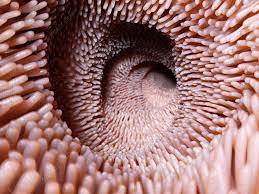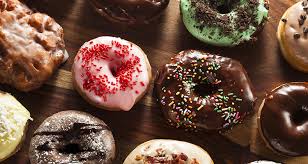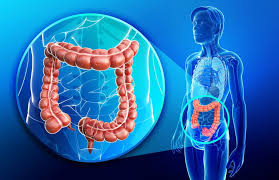This part of the digestive system breaks down food, drink entering the mouth into enzymes
What is salivation?

The process by which your body breaks down food and liquids into smaller parts to build and nourish cells, and to provide energy.
What is the Digestive System?

These little guys are intestinal wall extensions that increase the total surface area and add to the efficiency of breakdown. They are designed to accept as many nutrients as possible for your body.
What are villi?

(Intestinal Wall)
This is how much saliva we create on average, every day!
What is two pints per day?

This sugar type takes natural sugar and manipulates it synthetically into processed foods.
What is free sugar?

Once your food is broken down from saliva and chewing, it moves through this organ connecting your mouth to your stomach.
What is the esophagus?
This is the tightening and relaxation of muscles in the intestine to transport food and waste products.
What is peristalsis?

True or False: We have detergents in our digestive system.
TRUE: Bile acids are the detergents in bile, the digestive liquid made by the liver. Without these detergents, you couldn’t digest or absorb fats. And, just like dish detergent, they make fat mix well with water, and only then can digestive enzymes break down the fat for absorption into the bloodstream.
True or False: Our stomachs keep the same mucus and stomach acid within our lifetime.
FALSE! The stomach produces a new layer of mucus every two weeks to protect itself, while it produces half a gallon of hydrochloric acid each day.
This is the maximum rate of oxygen consumption attainable during physical exertion.
What is VO2 Max?

This organ is where food is stored and further broken down by acid and powerful enzymes. From there, food moves into the small intestine.
What is the stomach?

These are proteins that help speed up chemical reactions in the body. They affect every function, from breathing to digestion.
This is a small, pear-shaped organ on the right side of your abdomen, just beneath your liver. This organ holds a digestive fluid called bile that's released into your small intestine.
What is the gallbladder?
This is the very first stage of digestion.
What is salivation?
877-542-7233 - Who are you calling?
Who is the "Safe2Tell" Hotline? 
This is where most of the nutrients we intake are absorbed, where food is broken down even more by enzymes released from the pancreas and bile from the liver.
What is the small intestine?

This ailment is one indicator of our body struggling to break down protein in the digestive system. Symptoms may include bloating, gas, abdominal tightness, and heartburn.
What is indigestion?

This digestive liquid breaks down fats into fatty acids, which can be taken into the body by the digestive tract. It contains: cholesterol, acids, bilirubin, water, body salts, copper, and misc metals
What is bile?
People with this digestive system disease are unable to fully digest the sugar (lactose) in milk
What is lactose intolerance?
![]()
According to multiple oversight agencies in our country, this social media app is the #1 most dangerous app for teen use.
What is Snapchat?

This major organ has the amazing ability to break down and absorb water and nutrients, while simultaneously protecting us from bacteria and other potentially harmful substances.
What is the colon (or, large intestine)?

True or False? Food can rot in your stomach.
FALSE! Rotting, or fermentation, means bacterial action on food resulting in decomposition. Because of the presence of hydrochloric acid, the stomach has very few bacteria.
During digestion, this organ makes enzymes, pancreatic juices. These enzymes break down sugars, fats, and starches. This organ also helps your digestive system by making hormones.
What is the pancreas?

This digestive system disorder occurs when heartburn happens often. Over time and with intensity, it can erode the lining of the esophagus and lead to bleeding. The condition can also cause pain in the chest so extreme that it is sometimes mistaken for a heart attack.
What is Gastroesophageal Reflux Disease (GERD)?
These are the THREE options available to BHS Students for credit recovery, based on qualifications.
1 - Retake the class
2 - Summer School
3 - Take a class from an alternative, approved educational institution

